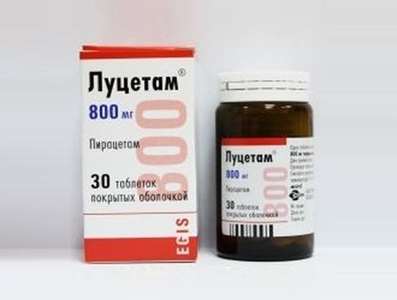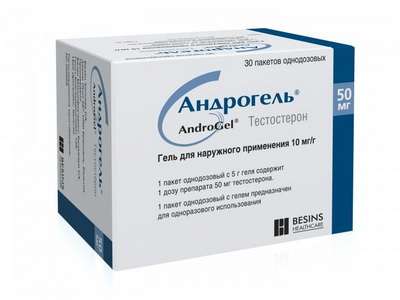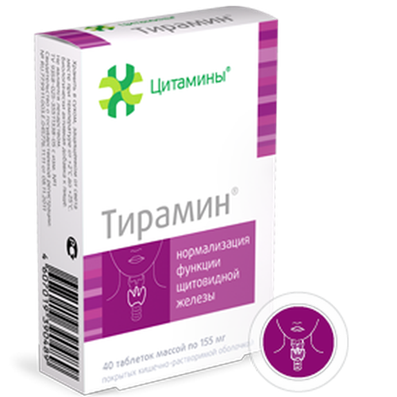Instruction for use: Fevarin
I want this, give me price
Dosage form: coated tablets
Active substance: Fluvoxamine*
ATX
N06AB08 Fluvoxamin
Pharmacological groups:
Antidepressant
The nosological classification (ICD-10)
F32 Depressive episode: Adynamic subdepression; Astheno-adynamic subdepressive states; Asthenoadressive disorder; Astheno-depressive disorder; Asthenodepressive state; Astheno-depressive state; Major Depressive Disorder; Vyaloapatichesky depression with retardation; Double Depression; Depressive pseudodement; Depressive illness; Depressive mood disorder; Depressive disorder; Depressive mood disorder; Depressive state; Depressive disorders; Depressive syndrome; Depressive syndrome larviated; Depressive syndrome in psychoses; Depressed masks; Depression; Depression Depletion; Depression with the phenomena of inhibition within the framework of cyclothymia; Depression is smiling; Involutional depression; Involutionary melancholy; Involutional depression; Manic-depressive disorder; Masked Depression; Melancholic Attack; Neurotic depression; Neurotic depression; Shallow Depression; Organic depression; Organic depressive syndrome; Simple depression; Simple melancholic syndrome; Psychogenic depression; Reactive depression; Reactive depression with moderate psychopathological symptoms; Reactive depressive states; Reactive depression; Recurrent depression; Seasonal depressive syndrome; Severostatic depression; Senile Depression; Symptomatic Depression; Somatogenic depression; Cyclotymic depression; Exogenous depression; Endogenous depression; Endogenous Depressive Conditions; Endogenous Depression; Endogenous depressive syndrome
F33 Recurrent depressive disorder: Major depressive disorder; Secondary depression; Double Depression; Depressive pseudodement; Depressive mood disorder; Depressive disorder; Depressive mood disorder; Depressive state; Depressive syndrome; Depressed masks; Depression; Depression is smiling; Involutional depression; Involutional depression; Masked Depression; Melancholic Attack; Reactive depression; Reactive depression with moderate psychopathological symptoms; Reactive depressive states; Exogenous depression; Endogenous depression; Endogenous Depressive Conditions; Endogenous Depression; Endogenous depressive syndrome
F42 Obsessive-compulsive disorder: Obsessive-compulsive syndrome; Obsessive compulsive states; Obsessive-compulsive syndrome; The Obsession Syndrome; The obsession neurosis; Obsessive-compulsive neurosis; Obsessions
Composition and release form
Tablets, coated with a coating.
fluvoxamine maleate 50 or 100 mg
auxiliary substances: mannitol - 152 or 303 mg; corn starch - 40 or 80 mg; pregelatinized starch - 6 or 12 mg; sodium stearyl fumarate - 1.8 or 3.5 mg; silicon dioxide colloidal anhydrous - 0.8 or 1.5 mg
shell: hypromellose - 4.1 or 5.6 mg; macrogol 6000 - 1.5 or 2 mg; talc - 0.3 or 0.4 mg; titanium dioxide (E171) 1.5 or 2.1 mg
The preparation contains neither lactose nor sugar (E121).
in a blister of 15 or 20 pcs .; in a pack of cardboard 1, 2, 3 or 4 blisters.
Description of dosage form
Tablets of 50 mg: round, biconvex tablets, coated with a coat of white; on one side of the tablet - risk and labeling "291" on both sides of the risks, on the other side - "S" above the icon 7.
Tablets of 100 mg: oval, biconvex tablets, coated with a white coating; on one side of the tablet - risk and labeling "313" on both sides of the risks, on the other side - "S" above the icon 7.
Pharmachologic effect
Pharmacological action - antidepressant.
Pharmacodynamics
Selectively inhibits the reuptake of serotonin by neurons of the brain and is characterized by a minimal effect on noradrenergic transmission. Fevarin® has an ineffective ability to bind to alpha and beta adrenergic, histaminergic, m-cholinergic, dopaminergic or serotonergic receptors.
Pharmacokinetics
When ingestion is completely absorbed from the digestive tract. Cmax is achieved in 3-8 hours, the equilibrium concentration after 10-14 days. Absolute bioavailability is 53% after the primary metabolism in the liver. Simultaneous reception of Fevarin with food does not affect the pharmacokinetics.
Binding to plasma proteins is approximately 80%. The volume of distribution is 25 l / kg.
Metabolism Fevarin occurs mainly in the liver. Although the 2D6 cytochrome P450 isoenzyme is the main one in fluvoxamine metabolism, the concentration of the drug in the blood plasma in individuals with reduced function of this isoenzyme is not much higher than in individuals with normal metabolism. The mean T1 / 2 from the blood plasma, which is 13-15 hours for a single dose, increases somewhat with repeated administration (17-22 hours), and the equilibrium concentration in blood plasma is usually achieved after 10-14 days.
Fevarin® undergoes biotransformation in the liver (mainly by oxidative demethylation) to at least 9 metabolites that are excreted through the kidneys. The two main metabolites have little pharmacological activity. Other metabolites are probably pharmacologically inactive. Fluvoxamine significantly inhibits cytochrome P450 1A2, moderately inhibits cytochromes P450 2C and P450 3A4, slightly - cytochrome P450 2D6.
The pharmacokinetics of fluvoxamine are the same in healthy people, the elderly and patients with renal insufficiency. Metabolism is reduced in patients with liver disease.
The steady-state concentrations of fluvoxamine in plasma in children aged 6-11 years are twice as high as in adolescents (12-17 years of age). Concentrations of the drug in the blood plasma of adolescents are similar to those in adults.
Readings of the drug Fevarin
depression of different genesis;
obsessive-compulsive disorder.
Contraindications
hypersensitivity to fluvoxamine maleate or to one of the excipients included in the formulation;
simultaneous administration of tizanidine and MAO inhibitors.
Treatment with fluvoxamine can be initiated 2 weeks after stopping the intake of an irreversible MAO inhibitor, or the day after the administration of the reversible MAO inhibitor. The interval between stopping fluvoxamine intake and initiating therapy with any MAO inhibitor should be at least a week.
Carefully:
hepatic and renal insufficiency;
convulsions in the anamnesis, epilepsy;
elderly age;
patients with a tendency to bleeding (thrombocytopenia);
pregnancy.
It is not recommended to use for treatment of depression in children (there is no clinical experience).
Application in pregnancy and lactation
Data from a small number of observations did not reveal the adverse effects of fluvoxamine on pregnancy. The potential risk is unknown. Care should be taken during pregnancy. Individual cases of withdrawal syndrome in infants after the use of fluvoxamine during pregnancy have been described.
Fevarin® penetrates in small amounts into breast milk. In this regard, it can not be used during breastfeeding.
Side effects
The most commonly observed symptom associated with the use of Fevarin® is nausea, sometimes accompanied by vomiting. This side effect, as a rule, disappears in the first 2 weeks of treatment.
Some of the side effects observed in clinical trials have often been associated with symptoms of depression, rather than the treatment with Fevarin®.
Common: often (1-10%) - asthenia, headache, malaise.
From the cardiovascular system: often (1-10%) - palpitations, tachycardia; sometimes (less than 1%) - postural hypotension.
From the gastrointestinal tract: often (1-10%) - abdominal pain, anorexia, constipation, diarrhea, dry mouth, indigestion; rarely (less than 0.1%) - a violation of liver function (increase in the level of hepatic transaminases).
From the side of the central nervous system: often (1-10%) - nervousness, anxiety, agitation, dizziness, insomnia or drowsiness, tremor; sometimes (less than 1%) - ataxia, confusion, extrapyramidal disorders, hallucinations; rarely (less than 0.1%) - convulsions, manic syndrome.
From the skin: often (1-10%) - sweating; sometimes (less than 1%) - skin reactions of hypersensitivity (rash, itching, angioedema); rarely (less than 0.1%) - photosensitivity.
From the musculoskeletal system: sometimes (less than 1%) - arthralgia, myalgia.
On the part of the reproductive system: sometimes (less than 1%) - delayed ejaculation; rarely (less than 0.1%) is a galactorrhea.
Other: rarely (less than 0.1%) - change in body weight; serotonergic syndrome, a condition similar to neuroleptic malignant syndrome, hyponatremia and the syndrome of insufficient secretion of antidiuretic hormone; very rarely - paresthesia, anorgasmia and perversion of taste.
If you stop taking fluvoxamine, you may develop withdrawal symptoms - dizziness, paresthesia, headache, nausea, anxiety (most of the symptoms are mild and self-stopping). With the withdrawal of the drug, a gradual dose reduction is recommended.
Hemorrhagic manifestations - ecchymosis, purpura, gastrointestinal bleeding.
Interaction
Fevarin® can not be used in combination with MAO inhibitors.
Fluvoxamine is a potent inhibitor of cytochrome P450 1A2, and to a lesser extent P450 2C and P450 3A4. Drugs that are largely metabolized by these isoenzymes are more slowly excreted and may have higher plasma concentrations in the case of simultaneous administration with fluvoxamine. This is especially important for drugs that are characterized by a small breadth of therapeutic effect. Patients need careful monitoring, if necessary adjust the dose.
Fluvoxamine has a minimal inhibitory effect on cytochrome P450 2D6 and probably does not affect non-oxidative metabolism and renal excretion.
Cytochrome P450 1A2. With the simultaneous use of Fevarin®, an increase in previously stable levels of tricyclic antidepressants (clomipramine, imipramine, amitriptyline) and neuroleptics (clozapine, olanzapine), which are largely metabolized by cytochromes P450 1A2, was observed. In this regard, it may be recommended to reduce the dose of these drugs.
Patients taking both fluvoxamine and drugs with a low therapeutic breadth, metabolized by cytochrome P450 1A2 (such as tacrine, theophylline, methadone, mexiletine) should be closely monitored. If necessary, adjust the dosage of these drugs.
When used in combination with warfarin, there was a significant increase in warfarin concentrations in the blood plasma and an increase in PV.
There have been reports of single cases of cardiotoxicity with the simultaneous use of fluvoxamine with thioridazine.
In studies devoted to the study of the interactions of Fevarin®, there was an increase in the concentrations of propranolol after the administration of Fevarin®. In this regard, you can recommend a reduction in the dose of propranolol in the case of an additional appointment of Fevarin®.
During the administration of fluvoxamine, the level of caffeine in the plasma may increase. Therefore, when consuming large quantities of beverages containing caffeine and when developing such adverse effects of caffeine as tremor, palpitation, nausea, anxiety, insomnia, it is necessary to reduce caffeine intake for the period of taking fluvoxamine.
With the simultaneous administration of fluvoxamine and ropinirole, the plasma concentration in the plasma may increase, thus increasing the risk of developing its overdose. In such cases, it is recommended to monitor the dosage of ropinirole or reduce it for the duration of treatment with fluvoxamine.
Cytochrome P450 2C. Patients taking both fluvoxamine and drugs with a low therapeutic breadth and undergoing cytochrome P450 2C metabolism (phenytoin) should be closely monitored, dosage adjustment of these drugs is recommended.
Cytochrome P450 3A4. Terfenadine, astemizole, cisapride - see "Precautions".
Patients taking both fluvoxamine and drugs with a low therapeutic breadth and undergoing cytochrome P450 3A4 metabolism (such as carbamazepine, cyclosporine) should be closely monitored and dosage adjustments are recommended.
With simultaneous administration of such benzodiazepines with fluvoxamine to oxidative metabolism as triazolam, midazolam, alprazolam and diazepam, an increase in their plasma concentration is possible. The dosage of these benzodiazepines should be reduced by the time of taking fluvoxamine.
Glucuronization. Fluvoxamine does not affect the concentration of digoxin in plasma.
Renal excretion. Fluvoxamine does not affect the concentration of atenolol in the plasma.
Pharmacodynamic reactions. In the case of combined administration of fluvoxamine with serotonergic drugs (tryptans, serotonin reuptake inhibitors), tramadol, the serotonergic effects of fluvoxamine may be increased (see "Precautions").
Fluvoxamine is used with lithium drugs for the treatment of severe patients who respond poorly to pharmacotherapy. Lithium and, possibly, tryptophan increase the serotonergic effects of Fevarin ® and therefore treatment with this combination should be done with caution.
With the simultaneous administration of oral anticoagulants and fluvoxamine may increase the risk of hemorrhages. These patients should be under the supervision of a doctor.
Dosing and Administration
Inside, not liquid and squeezed a little water.
Depression. The recommended starting dose is 50 or 100 mg (once, in the evening). It is recommended that the starting dose be gradually increased to the effective level. An effective daily dose, usually 100 mg, is selected individually, depending on the patient's response to treatment. The daily dose can reach 300 mg. Daily doses over 150 mg should be divided into several doses. According to official WHO recommendations, antidepressant medication should be continued for at least 6 months after the depressive episode. To prevent the recurrence of depression, it is recommended to take 100 mg of Fevarin ® once a day.
Obsessive-compulsive disorder. It is recommended to start with a dose of 50 mg of Fevarin® per day for 3-4 days. The effective daily dose is usually from 100 to 300 mg. Doses should be increased gradually until an effective daily dose, which should not exceed 300 mg in adults. Doses up to 150 mg can be taken in the form of one-time, preferably in the evening. Daily doses over 150 mg are recommended to be divided into 2 or 3 doses.
Doses for children older than 8 years and adolescents: initial - 25 mg / day for 1 reception, maintenance - 50-200 mg / day. The daily dose should not exceed 200 mg. Daily doses in excess of 100 mg are recommended to be divided into 2 or 3 doses.
With a good response to the drug, treatment can be continued in an individually selected daily dose. If improvement is not achieved after 10 weeks of treatment, fluvoxamine should be discarded. So far, no systematic studies have been conducted that could answer the question of how long fluvoxamine treatment can be administered, but obsessive-compulsive disorders are chronic, and therefore it may be considered advisable to prolong the treatment with Fevarin® for more than 10 weeks in patients well responding to this drug. The selection of the minimum effective maintenance dose should be carried out with care on an individual basis. Some clinicians recommend concomitant psychotherapy in patients who respond well to pharmacotherapy.
Treatment of patients suffering from hepatic or renal insufficiency should be started with the lowest doses under strict medical supervision.
Due to the lack of clinical experience, Fevarin® is not recommended for the treatment of depression in children.
Overdose
Symptoms: the most characteristic are gastrointestinal disorders (nausea, vomiting and diarrhea), drowsiness and dizziness. In addition, there are reports of cardiovascular disorders (tachycardia, bradycardia, arterial hypotension), violations of liver function, convulsions and even coma. To date, more than 300 reports of cases of deliberate overdose of Févárina® have been received. The highest recorded dose of Fevarin® received by one patient was 12 g; this patient was cured as a result of symptomatic therapy. More serious complications were observed in cases of deliberate overdose of Fyvarin® against the background of concomitant pharmacotherapy.
Treatment: gastric lavage, which should be performed as soon as possible after taking the drug, as well as symptomatic therapy. In addition, it is recommended that activated charcoal be taken multiple times. Intensified diuresis or dialysis seem unjustified. There is no specific antidote.
Precautionary measures
During treatment with the drug, alcohol is not recommended.
In patients with depression, there is usually a high probability of attempted suicide, which can persist until a sufficient remission is achieved. Such patients should be monitored.
Treatment of patients suffering from hepatic or renal insufficiency should be started with minimally effective doses of Fevarin® under strict medical supervision. In rare cases, treatment with Fevarin® can lead to an increase in the level of hepatic transaminases, most often accompanied by the corresponding clinical symptoms. In these cases, Fevarin® should be canceled.
Blood glucose control may be impaired, especially in the early stages of treatment. You may need to adjust the dosage of antidiabetic drugs.
Care should be taken when prescribing a patient with a history of seizures. Avoid the appointment of Fevarin® to patients with unstable epilepsy, and patients with stable epilepsy should be under strict medical supervision. Treatment with Fevarin® should be discontinued if epileptic seizures develop or their frequency increases.
Rare cases of development of a serotonergic syndrome or a condition similar to a malignant neuroleptic syndrome, which can be associated with taking fluvoxamine, in combination with other serotonergic antidepressants and neuroleptic drugs, are described. Since these syndromes can lead to potentially life-threatening conditions, manifested hyperthermia, muscle stiffness, myoclonus, lability of the autonomic nervous system with possible rapid changes in vital parameters, changes in mental status, including increased irritability, agitation, confusion, delirious disorders, and to whom, - treatment with fluvoxamine should be discontinued. If necessary, appropriate treatment should be started.
As with the use of other selective serotonin reuptake inhibitors, in rare cases with fluvoxamine administration, hyponatremia may occur, which is reversed after drug withdrawal. Some cases were caused by the syndrome of insufficient secretion of antidiuretic hormone. In most cases, these cases were observed in elderly patients.
There are reports of intradermal hemorrhages such as ecchymosis and purpura, as well as hemorrhagic manifestations (eg, gastrointestinal bleeding) observed with the use of selective serotonin reuptake inhibitors. Caution should be exercised in prescribing these drugs in elderly patients and patients who are simultaneously receiving drugs acting on platelet function (atypical antipsychotics and phenothiazines, many tricyclic antidepressants, aspirin, NSAIDs) or drugs that increase the risk of bleeding, as well as in patients with bleeding in the anamnesis and prone to bleeding (for example, in patients with thrombocytopenia).
With combined therapy with fluvoxamine, the concentration of terfenadine, astemizole or cisapride in blood plasma may increase, increasing the risk of prolonging the QT interval. Therefore, fluvoxamine should not be prescribed with these drugs.
Data obtained in the treatment of elderly patients and younger patients indicate that there are no clinically significant differences between the usual daily doses used. However, increasing doses in elderly patients should always be slower and with greater caution. Fevarin® can lead to a slight decrease in heart rate (by 2-6 beats per minute).
Due to the lack of clinical experience, Fevarin® is not recommended for the treatment of depression in children.
Fevarin®, given to healthy volunteers at doses up to 150 mg, had no effect or had little effect on the ability to drive a car or drive a car. At the same time, there are reports of drowsiness observed during drug treatment. In this regard, it is recommended that care be taken before the final determination of the individual response to the drug.
Storage conditions for Fevarin
In dry, protected from direct sunlight, at a temperature not exceeding 20 ° C.
Keep out of the reach of children.
Shelf life of Fevarin
3 years.
Do not use after the expiry date printed on the package.

 Cart
Cart





